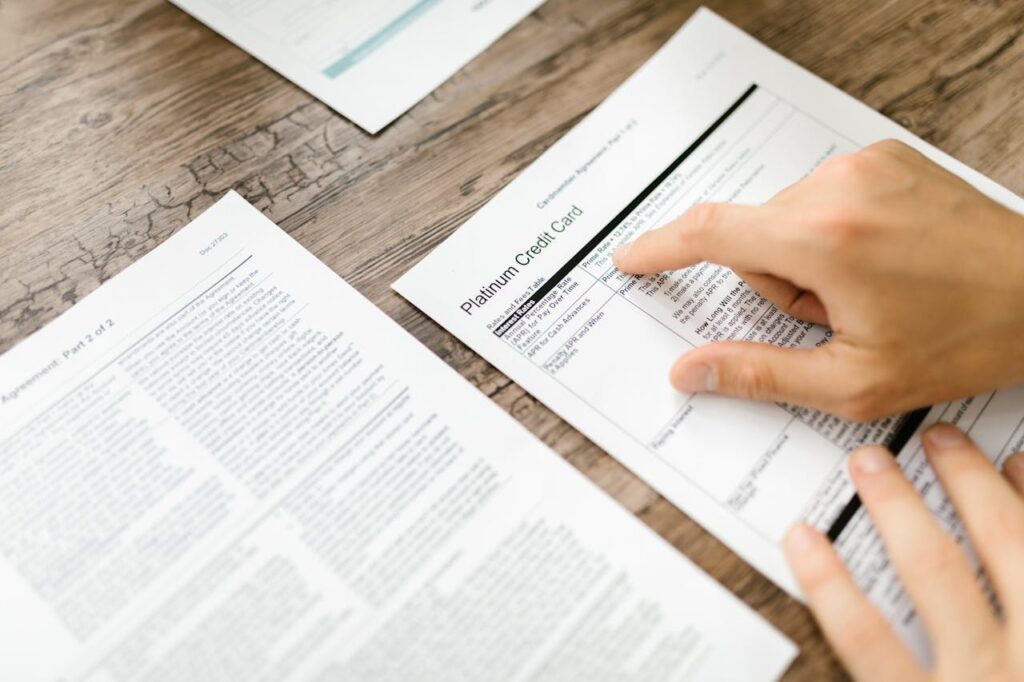The personal finance world loves to shame your daily coffee habit. “Skip the $5 latte and you’ll save $1,825 a year!” they proclaim. But while you’re agonizing over your morning caffeine ritual, subscription services are quietly draining your bank account at a much faster rate—and you probably don’t even know it.
Here’s the uncomfortable truth: your streaming services, forgotten memberships, and digital subscriptions likely cost you more than your coffee habit ever will. And unlike that latte that provides actual energy and enjoyment, half of your subscriptions go completely unused.
The Hidden Subscription Economy
The average American now pays for 12 different subscription services, spending between $100-200 more per month than they realize. That’s $1,200-2,400 annually—money that disappears automatically from your account while you’re busy calculating how much your coffee “addiction” costs.
The Psychology of Subscription Spending
Why Subscriptions Feel “Free”:
- Small monthly charges seem insignificant
- Automatic payments bypass spending awareness
- “Cancel anytime” creates illusion of control
- Companies deliberately make cancellation difficult
Why Coffee Feels “Expensive”:
- Cash transaction creates immediate awareness
- Daily purchase decision reinforces cost consciousness
- Visible interaction with money (even card payments)
- Social stigma amplifies guilt
The result? You feel guilty about your $4.50 coffee while ignoring the $19.99 monthly charge for a service you used twice.
The Real Cost Comparison: Subscriptions vs. Coffee
Let’s examine actual spending data for a typical consumer:
Your Coffee Habit (Annual Cost):
- Daily coffee: $4.50 × 365 days = $1,642
- Realistic coffee habit: $4.50 × 250 days (accounting for weekends/vacations) = $1,125
Your Subscription Habit (Annual Cost):
- Netflix: $15.49/month = $186
- Spotify: $10.99/month = $132
- Disney+: $13.99/month = $168
- Hulu: $17.99/month = $216
- Amazon Prime: $14.98/month = $180
- Gym membership: $29.99/month = $360
- Meal kit service: $59.99/month = $720
- Cloud storage: $9.99/month = $120
- News subscription: $12.99/month = $156
- Gaming subscription: $14.99/month = $180
- Total: $2,418 annually
The shocking reality: Your subscriptions likely cost you $1,293 MORE than your coffee habit.
“For a case study on optimizing recurring expenses, read How I Saved $10,000 in a Year Without Cutting Out Coffee.”
Why Subscription Optimization Beats Coffee Deprivation

Reason 1: Bigger Financial Impact
Cutting just 3-4 unused subscriptions saves you more money than eliminating coffee entirely:
Canceled subscriptions savings:
- Unused gym membership: $360/year
- Forgotten streaming service: $180/year
- Meal kit service (used 2x/month): $720/year
- Total savings: $1,260
Coffee elimination savings: $1,125/year
Winner: Subscription optimization saves you $135 MORE while maintaining your coffee enjoyment.
Reason 2: Quality of Life Preservation
Cutting coffee affects:
- Daily energy and productivity
- Social connections (coffee meetings, shop atmosphere)
- Routine and mental well-being
- Simple daily pleasure
Cutting unused subscriptions affects:
- Services you’ve forgotten about
- Redundant entertainment options
- Facilities you never visit
- Features you don’t use
Winner: Subscription cuts maintain life satisfaction while improving finances.
Reason 3: Sustainable Long-Term Habits
Coffee elimination challenges:
- Daily willpower required
- Social awkwardness in coffee-centric meetings
- Productivity impacts from caffeine withdrawal
- High likelihood of resuming habit
Subscription optimization benefits:
- One-time effort with permanent results
- No daily decision fatigue
- No social or productivity impacts
- Easy to maintain long-term
Winner: Subscription changes create lasting financial improvement with minimal ongoing effort.
The Subscription Audit: Your Money-Saving Action Plan
Step 1: Discover Your Hidden Subscriptions

Check these sources:
- Bank and credit card statements (last 3 months)
- Email receipts in your inbox
- App subscriptions on phone/devices
- Automatic payment settings in PayPal/digital wallets
Common hidden subscriptions:
- Free trials that converted to paid
- Old gym or fitness app memberships
- Software subscriptions for discontinued projects
- Media services added during promotions
- Cloud storage upgrades you forgot about
Step 2: Calculate True Usage Value

For each subscription, calculate cost per use:
Formula: Monthly cost ÷ Monthly usage = Cost per use
Examples:
- Gym membership: $30/month ÷ 2 visits = $15/workout
- Streaming service: $15/month ÷ 8 hours watched = $1.88/hour
- Meal kit service: $60/month ÷ 2 meals = $30/meal
Decision rule: If cost per use exceeds what you’d pay for alternatives, cancel it.
Step 3: Apply the 90-Day Rule

The test: If you haven’t used a subscription in the past 90 days, cancel it immediately.
No exceptions for:
- “I might use it someday”
- “It’s only $10/month”
- “I used it a lot last year”
Exceptions allowed for:
- Seasonal services (tax software, streaming for specific shows)
- Emergency services (roadside assistance, insurance)
- Services with high switching costs
Step 4: Optimize Remaining Subscriptions
Downgrade strategies:
- Netflix: Switch from Premium to Standard (-$5/month)
- Spotify: Use free version with ads (-$11/month)
- Cloud storage: Reduce plan or use free alternatives (-$5-15/month)
- Phone plan: Analyze usage and switch to appropriate tier
Bundle opportunities:
- Disney+ bundle (Disney, Hulu, ESPN) vs. individual subscriptions
- Amazon Prime vs. separate shipping + video costs
- Family plans for Spotify, Apple Music, Netflix
Annual payment discounts:
- Many services offer 10-20% discounts for annual payments
- Calculate if the upfront cost makes sense for services you definitely use
“Track all your fees with one of our recommended Free Budget Tracking Apps.”
The Smart Subscription Strategy
Tier 1: Essential Services (Keep)
Services that provide daily value or significant cost savings:
- Primary streaming service for family entertainment
- Cloud backup for irreplaceable files
- Phone service and internet
- Professional software for work
Tier 2: Seasonal Services (Pause/Resume)
Services you use heavily during certain periods:
- Tax preparation software (use annually, cancel after)
- Fitness apps (active during resolution season)
- Educational platforms (subscribe during learning periods)
Tier 3: Luxury Services (Evaluate Rigorously)
Services that provide convenience but aren’t essential:
- Multiple streaming platforms
- Meal kit services
- Premium versions of free apps
- Subscription boxes
Tier 4: Forgotten Services (Cancel Immediately)
Services you’ve forgotten about or use less than monthly:
- Old gym memberships
- Unused software subscriptions
- Trial subscriptions that converted to paid
- Duplicate services
Real-World Success Stories
Case Study 1: Maria’s Subscription Cleanse
Before: 15 subscriptions totaling $187/month ($2,244/year)
After: 6 subscriptions totaling $67/month ($804/year)
Annual savings: $1,440
Coffee habit: Still enjoys daily lattes ($1,200/year)
Net result: $240 MORE savings than coffee elimination, with maintained life satisfaction
Case Study 2: David’s Strategic Optimization
Before: $156/month in subscriptions, considering cutting $90/month coffee habit
Strategy: Kept coffee, optimized subscriptions to $78/month
Results: $78/month savings ($936/year) + maintained productivity from caffeine
Bonus: Used coffee shop time for networking, leading to freelance opportunities worth $3,600/year
Advanced Subscription Optimization Strategies
The Rotation Method
Instead of maintaining multiple streaming services:
- Subscribe to one service for 2-3 months
- Cancel and switch to another service
- Rotate through 3-4 services throughout the year
- Savings: 50-75% on entertainment subscriptions
“Learn more lifestyle financial strategies in Minimalism vs. Consumerism.”
The Family Plan Maximization
- Share family plans with trusted friends/family
- Spotify family: $15.99 for 6 people vs. $65.94 for individual plans
- Netflix: Split costs among multiple households
- Savings: 60-80% on individual subscription costs
The Annual Review System
Set calendar reminder for annual “Subscription Audit Day”:
- Review all subscriptions for usage and value
- Negotiate better rates with service providers
- Cancel services that no longer provide value
- Time investment: 2-3 hours annually
- Average savings: $500-1,500/year
The Psychology Behind Smart Financial Choices
Why This Approach Works Better
Subscription optimization succeeds because:
- One-time effort with permanent results
- No impact on daily pleasures
- Immediate, visible financial improvement
- Builds momentum for other financial optimizations
Coffee elimination fails because:
- Daily willpower requirement creates fatigue
- Removes a source of daily joy
- Social complications in coffee-centric culture
- High likelihood of habit resumption
Building Financial Awareness
The real value of subscription auditing isn’t just the money saved—it’s the financial awareness developed. When you see how much you spend on forgotten services, you become more conscious of all financial decisions.
This awareness transfers to:
- Better evaluation of new subscription offers
- Increased scrutiny of recurring expenses
- More intentional spending decisions
- Greater appreciation for money’s value
Your 30-Day Subscription Challenge
Week 1: Discovery
- Audit all bank/credit card statements for subscriptions
- List every recurring charge, no matter how small
- Calculate total monthly and annual subscription costs
Week 2: Evaluation
- Apply the 90-day usage rule
- Calculate cost per use for each service
- Identify overlapping or redundant services
Week 3: Optimization
- Cancel unused subscriptions
- Downgrade over-subscribed services
- Research bundle opportunities for kept services
Week 4: Automation
- Set calendar reminders for future audits
- Update payment methods to single card for easy tracking
- Establish new subscription approval process
Expected savings: $50-150/month ($600-1,800/year)
The Bigger Picture: Intentional Spending
This isn’t really about coffee versus subscriptions—it’s about making intentional choices with your money.
The coffee lesson: Small daily expenses that provide genuine value are worth keeping.
The subscription lesson: Large recurring expenses that provide little value should be eliminated immediately.
The real principle: Optimize ruthlessly for unused services, preserve consciously for meaningful expenses.
Your $4.50 coffee brings daily energy, productivity, and enjoyment. Your forgotten $19.99 subscription brings monthly regret when you see it on your statement.
Keep the coffee. Cancel the subscription.

Starting Your Subscription Optimization Today
- Right now: Check your phone for active app subscriptions
- This evening: Review last month’s credit card statement
- This weekend: Complete full subscription audit
- Next week: Cancel unused subscriptions and optimize others
The hardest part is starting. Once you see how much you’re spending on forgotten services, the motivation to optimize becomes automatic.
Your future self will thank you for choosing strategic financial optimization over arbitrary deprivation. And you can celebrate your savings with a perfectly guilt-free latte.
What subscriptions have you discovered you’d forgotten about? How much could you save by optimizing subscriptions instead of cutting coffee? Share your subscription audit results in the comments below.
Related Articles
- 7 Hidden Bank Fees That Are Quietly Draining Your Savings
- 9 Life Hacks That Will Save You $200 This Month
- Financial FOMO: How Social Media Makes You Spend More
- The Psychology of Saving: Why It’s So Hard and How to Make It Easy
Resources Links
- Harvard Business Review: “The Subscription Economy” (https://hbr.org/2019/07/the-subscription-economy-and-its-future)
- Consumer Reports: “Managing Subscription Services” (https://www.consumerreports.org/subscriptions/how-to-manage-subscriptions/)
- McKinsey: “The Rise of Subscription Models” (https://www.mckinsey.com/industries/technology-media-and-telecommunications/our-insights/the-rise-of-the-subscription-economy)





